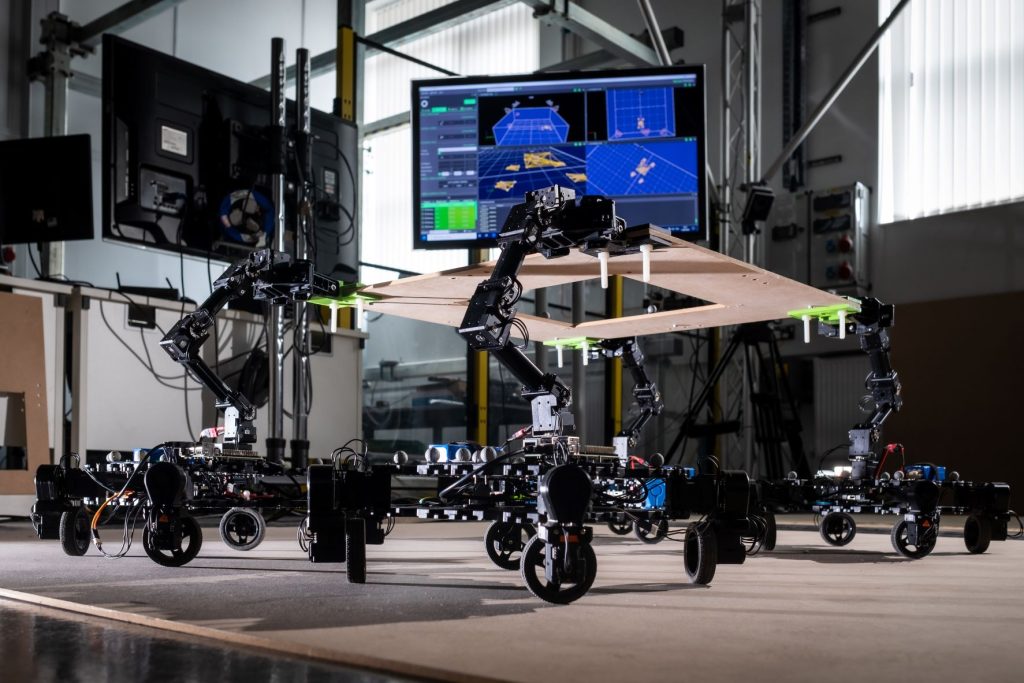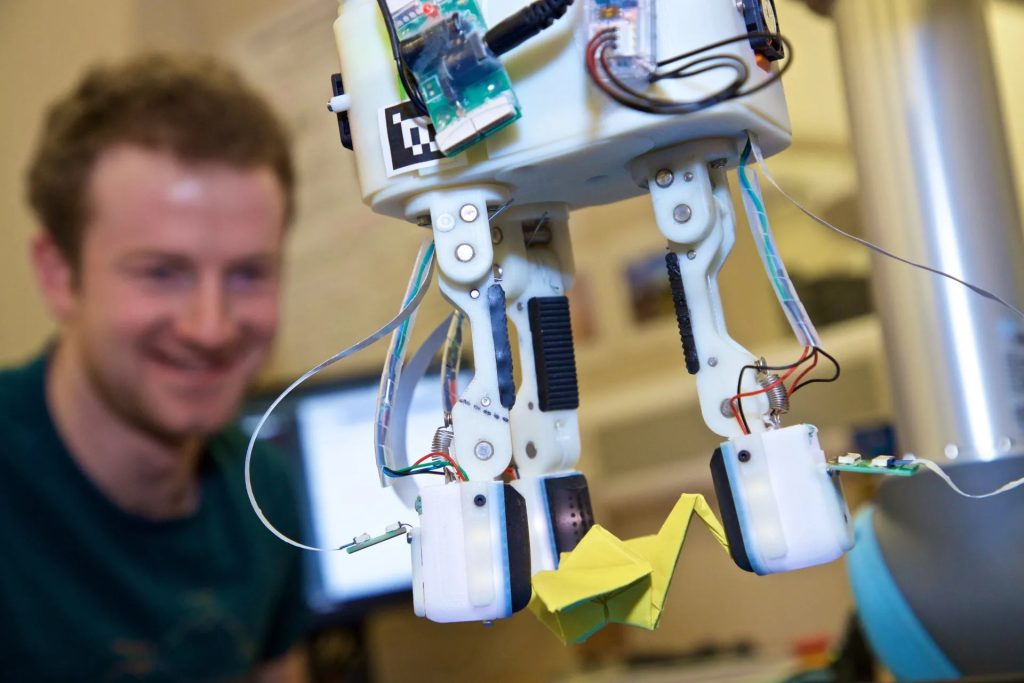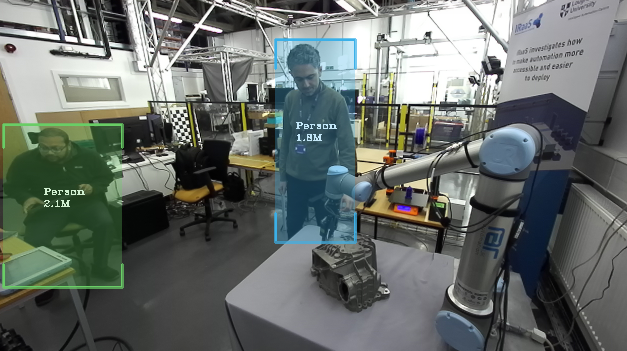Research
Industry discussions suggest that by tackling the following four areas, we will significantly increase confidence in investment, reducing the cost barrier by enabling greater return on investment. Emerging smart technologies will create many opportunities for new products and services. Our partners envision automation systems moving away from monolithic, dedicated systems towards dynamic, distributed systems with multiple “actors” collaborating together. Large enterprises will benefit as automation can be brought into traditionally manual production processes. Similarly, better accessibility and agility will allow more Small and Medium sized Enterprises

Priority Area 1 – Collaboration
Robotic systems need better models of how people naturally interact with others to start truly collaborating with them and fully leverage their respective strength

Priority Area 2 – Autonomy
Robots need to extend their sensory perception and autonomous cognition capabilities to effectively carry out increasingly complex tasks, deal with variations, and disruptive changes.

Priority Area 3 – Simplicity
The process of designing, verifying, validating, deploying and operating automation needs to become more accessible for a wider range of people and organisations.

Priority Area 4 – Acceptance
The societal, cultural, and economic impact of automation needs to be better explored to inform future policy, regulations, and education requirements.